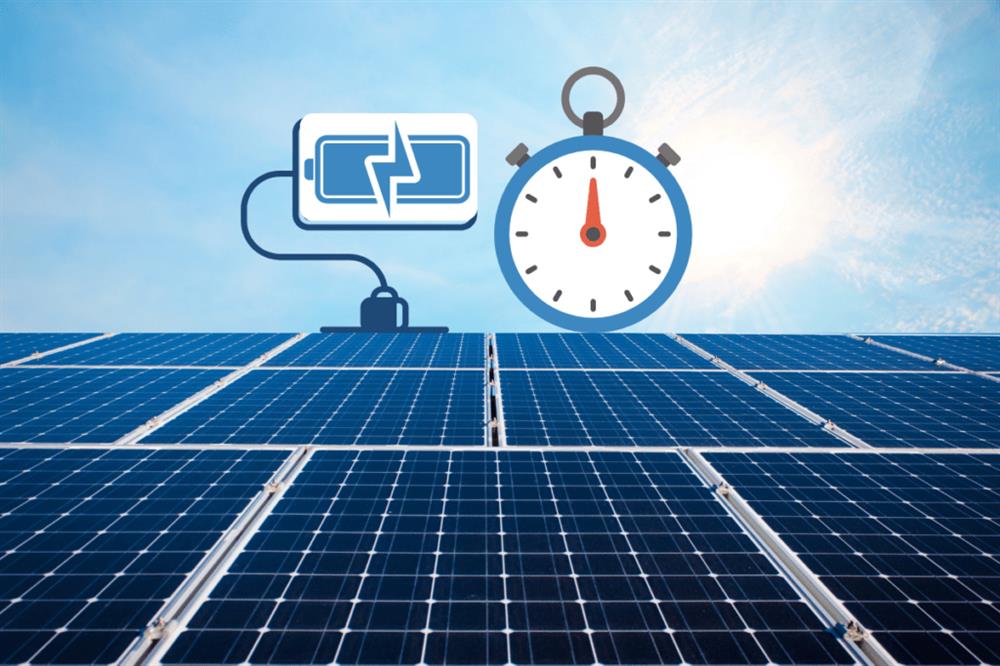How to Calculate Charging Time of Battery by Solar Panel?

Do you want to know how long it will take for a solar panel to charge a battery? The whole process has been broken down for you step by step in this easy guide. After using an appropriate method and tools charged by sunlight, you would end up with yet more efficient performance.
What Is the Charging Time of a Battery?
the charging time, is the time that your solar panel takes to recharge completely from empty to full batteries When, the power of your solar panel, the size of the battery and how many hours each day can provide sunlight all come into play. It can save you money if you know this piece of information where ever possible to use discretion in arranging your usage patterns for power supply.
How Battery Capacity Affects Charging
Battery capacity is the measure of the battery's energy storage capability. More amp-hours mean there is more energy stored in the battery and thus it will take longer for the charging process to complete. On the other hand, a small battery will charge quickly as the amount of energy it needs to reach full capacity is less.
How Solar Panel Power Plays a Role
Typically the power of a solar cell is measured in watts, the more watts it has the faster your battery will be charged. In this regard, a 200-watt panel must transmit a larger amount of power to the battery cells than will a 100-watt panel. During times of good sunlight that is continuously shining, charging is more rapid and efficient.
Where Location and Weather Matter
Where you are has a very great impact on the time it takes to charge. Areas with longer daylight hours achieve results faster, but ratter or rainy days can slow things down. In Ireland, adjusting your panel angle helps capture sunlight and reduce charging delays.
How to measure Charging Time Step-by-Step Guide
This method will give you a rough idea of charging time. In order to estimate how long a full battery takes to charge by simple calculations, all you need are your battery’s capacity, solar panel output and the result of that quick calculation.
Step 1: Find Your Battery Capacity
Over the battery label, locate its amp-hour rating. To obtain the total watt-hours, multiply the voltage of the battery by its capacity in amp-hours. For instance, a 12V 100Ah battery can store energy of 1200 watt-hours. This is the energy capacity of the battery when it is fully charged.
Step 2: Verify Your Solar Panel Output
Now check out the wattage of your solar panel. Here's how you make it Divide your battery's watt hours by the wattage of the panel to get a result in hours. For example, a 200W panel charging a 1200Wh battery takes roughly six hours
Step 3: Consider Energy Loss
No solar setup is perfectly efficient. Cables and controllers account for approximately 15–20% power loss. Therefore, to calculate a realistic time that takes into account the energy loss, simply multiply your time result by 1.2.
Where to purchase Reliable Solar Panels and Batteries
For the best in solar, visit mwel. This site offers high quality solar panels, batteries, and accessories for domestic, commercial uses. You'll find trustworthy brands and sound advice to design your solar system just right. Not only will make savings on your electric bill.
Best Tips to Improve Charging Speed
With a few simple changes to improve your setup, solar charging can be made much faster. Proper maintenance and correct configuration have huge effects on both charging times and power efficiency.
1. Keep Panels Clean and Angled
A clean solar panel captures more sunlight. Dirt or dust can block energy absorption and slow charging. Set your panel at the right tilt so it directly faces the sun for the best daily performance.
2. Use a Good Charge Controller
A good MPPT charge controller should speed up charging times as well as safeguard your batteries it takes over regulation of voltage flowing to the batteries to avoid overcharging and makes sure that your solar power is being used efficiently completely.
3. Match Battery and Panel Size
Panel size must be in proportion to battery capacity. If the battery is too large and panel too small, recharging will take longer. A matching set-up provides relatively quick charges and good long-term performance.
Conclusion
The calculation of charging time for battery could help in the rational utilization of solar energy. By the proper matching of the batteries and panels, you could enjoy the power supply without interruptions during the day and at night. With the right calculations, quality components, and constant sunshine, make a solar setup that lasts longer.
FAQ’s
Q1. How do I Calculate the Time for battery Charging?
First, calculate the battery's voltage by its amp-hours rating, and then divide that result by the solar panel's wattage. At last, multiply the answer by 1.2 to take into consideration the energy loss.
Q2. Is it easy to charge a large battery with a small solar panel?
That is true, but the charging time will be extremely long. If you select sizes that are compatible, you will gain better efficiency and quicker results.
Q3. How much sunlight do I require for full charging?
Typically, solar panels perform well if they receive about 4–6 hours of intense direct sunlight every day.
Q4. Can I use one battery for various solar panels?
Certainly, connecting various panels in parallel to a battery will boost the current drawn from them. This will help your battery get charged faster when there is sunlight.
Q5. Do temperature and weather affect solar charging?
Yes, cloudy or cold weather decrease efficiency, while bright sunlight enhance energy output and charging speed.





